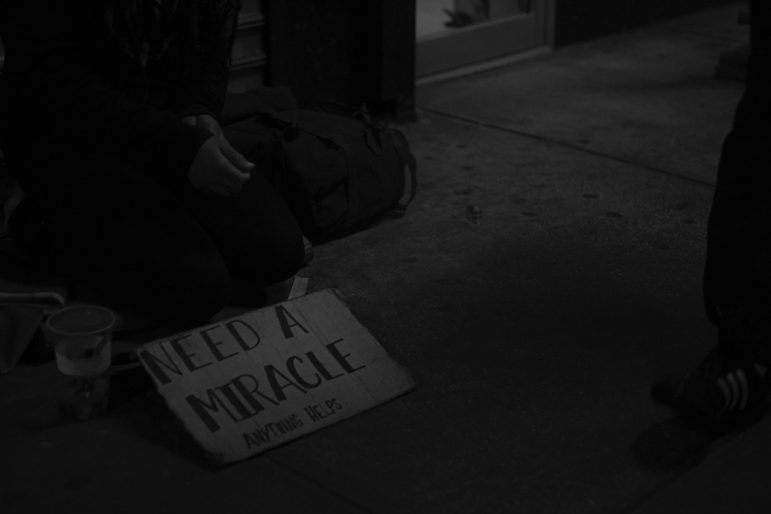By Ben King, Ph.D., THN Board Member
Give to the THN Data Sharing Network project.
Radical, systemic change is part of what is called for if we truly want to move the needle when it comes to ending homelessness. Advances in service delivery systems such as this sometimes happen in tiny, baby steps and sometimes they happen in great big leaps of faith. Interoperability is one of the last, great hurdles in building the smart data systems of the future. It seems like such a simple idea, but the details have held up experts in fields like healthcare for decades now. The term “interoperability” refers to the ability of groups of service providers using two different data systems to be able to safely and reliably exchange information about their clients. Typically, a combination of data standards and integration ‘architecture’ is required in order to achieve this kind of exchange between isolated systems.
Hurricane Harvey taught cities like Houston, Corpus Christi, and really the entire state, critically valuable lessons about the effects of a natural disaster on the most vulnerable and disenfranchised people in American society. Clients experiencing homelessness who were already receiving services when the call to evacuate was made were completely anonymous when they arrived to wherever they ended up evacuating. The data systems, which tracked personal information, level of need, and approvals for services, were all left behind in the community they were forced to depart.
Texas has ELEVEN distinct homeless crisis response systems, but they rarely talk with one another. We need to connect Texans experiencing homelessness to necessary services as efficiently as we can. The current system of trying to find workarounds on an individual client-by-client basis is untenable. It puts all the burden on under-resourced and over-loaded service providers, with their access restricted to their own community’s silo of services. To change this status quo, we need clear communication between these systems and that doesn’t happen on its own.
The Texas Homeless Network is in a prime position to champion this sort of system. THN is the leader in advocacy, government relations, education, and all kinds of other initiatives at the state level in Texas. They also support the largest geographic region of homelessness response services across the so-called ‘Balance-of-State’. That Balance of State accounts for the 215 counties throughout Texas not accounted for by the other regions centered around the denser, urban areas of the state.
Rural homelessness in Texas is a major issue and one that is often overlooked. Advocates and providers often refer to those experiencing rural homelessness as the “hidden homeless”. Many of them live in places that no one can see. They are sleeping in the woods, cars, abandoned or closed farm and agricultural structures, or other places not intended for human habitation. Many more individuals and families are at heightened risk of homelessness and living in substandard or overcrowded housing in rural areas. There are multiple barriers to working with and ending rural homelessness for people, which includes limited transportation options for those with extremely low-income, a scarcity of available affordable housing in the private market, and from federal program priorities that tend to favor subsidized housing in urban centers.
Each community has its share of vulnerable and disenfranchised folks, many of whom rely on a combination of supportive services to keep them afloat. Individuals either acutely or recently experiencing homelessness often require intensive case management, medical or behavioral healthcare, and more. They may have a case manager that they know and trust, or a therapy group that works well for them. And while they may be approved and registered to receive these services in one community, that approval is not automatically or immediately extended to other areas, with other service agencies. Harvey put that reality on full display.
There WILL be more storms like Harvey in our future. That much is clear. The only thing that we can do as a community is to plan and prepare for the inevitable so that we don’t repeat the mistakes of our still-very-recent past.
THN has already formed a partnership with Amazon Web Services to develop the prototype for the network, which we hope will be ready in early 2019. Once this is complete, they plan to spend the next year scaling that up to a complete statewide data-sharing network.
However, all of this work comes at a (very reasonable) cost to support the materials, staff time, and technical expertise required to make this vision a reality. With your support, they can build off the momentum created through their work on the prototype. You can be among the visionaries who help us develop a service that will help end homelessness in Texas.
I recognize that the holidays and the peak season of charitable giving is behind us, but the need for smart, integrated systems like this is year-round. I hope you will take a moment right now and consider supporting the work of Texas Homeless Network in their goal to build a better system for the clients and service providers all across the state of Texas.
Visit the THN Data Sharing Network project gofundme page.

